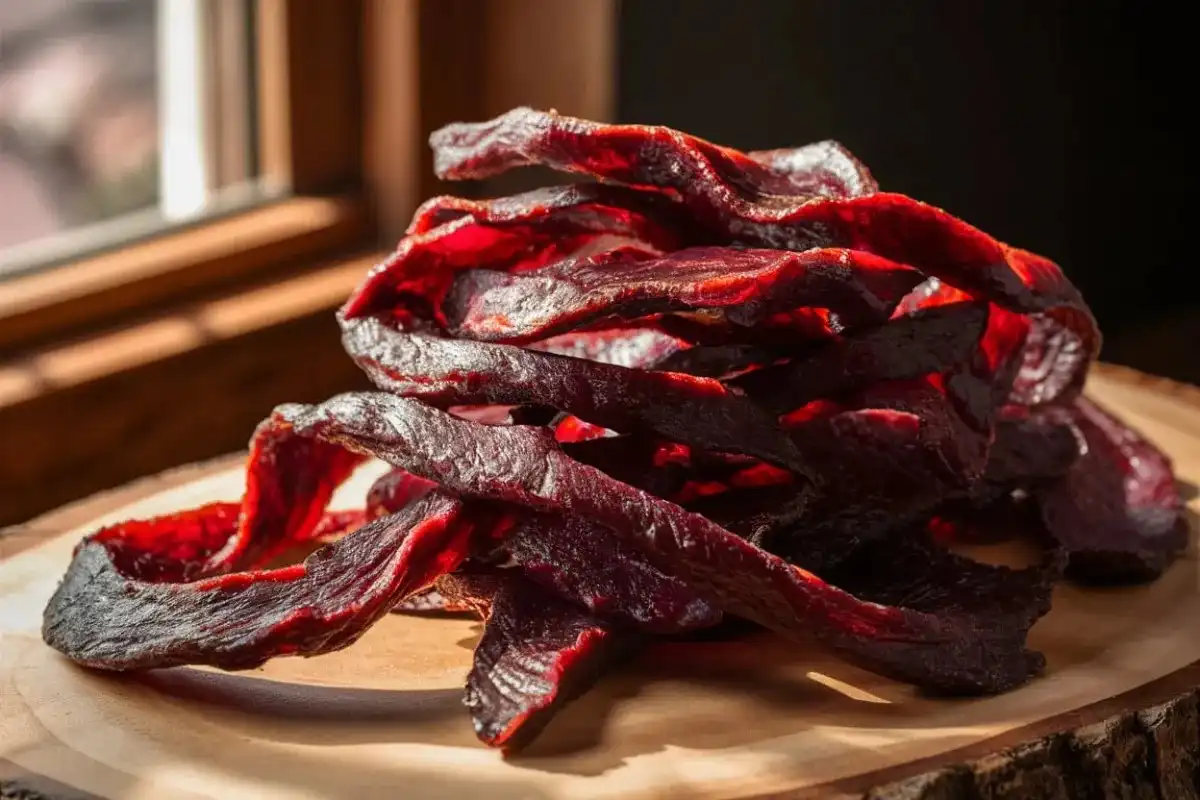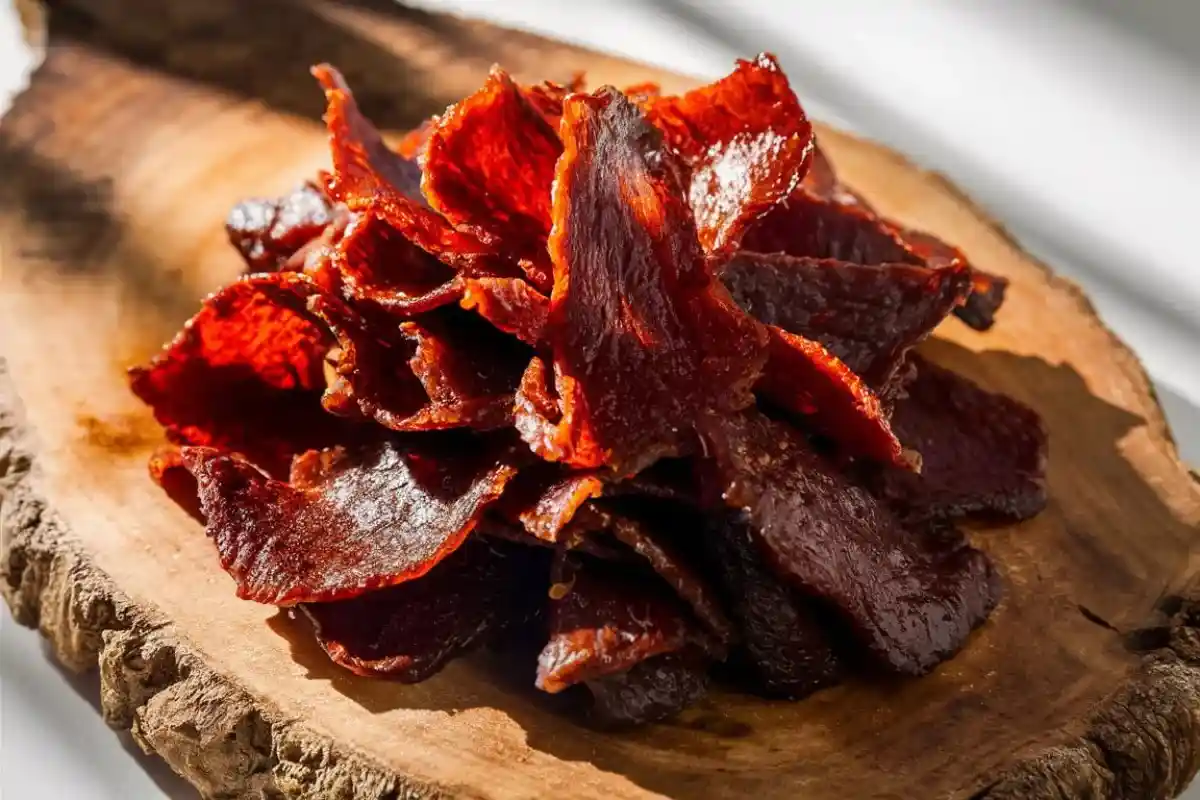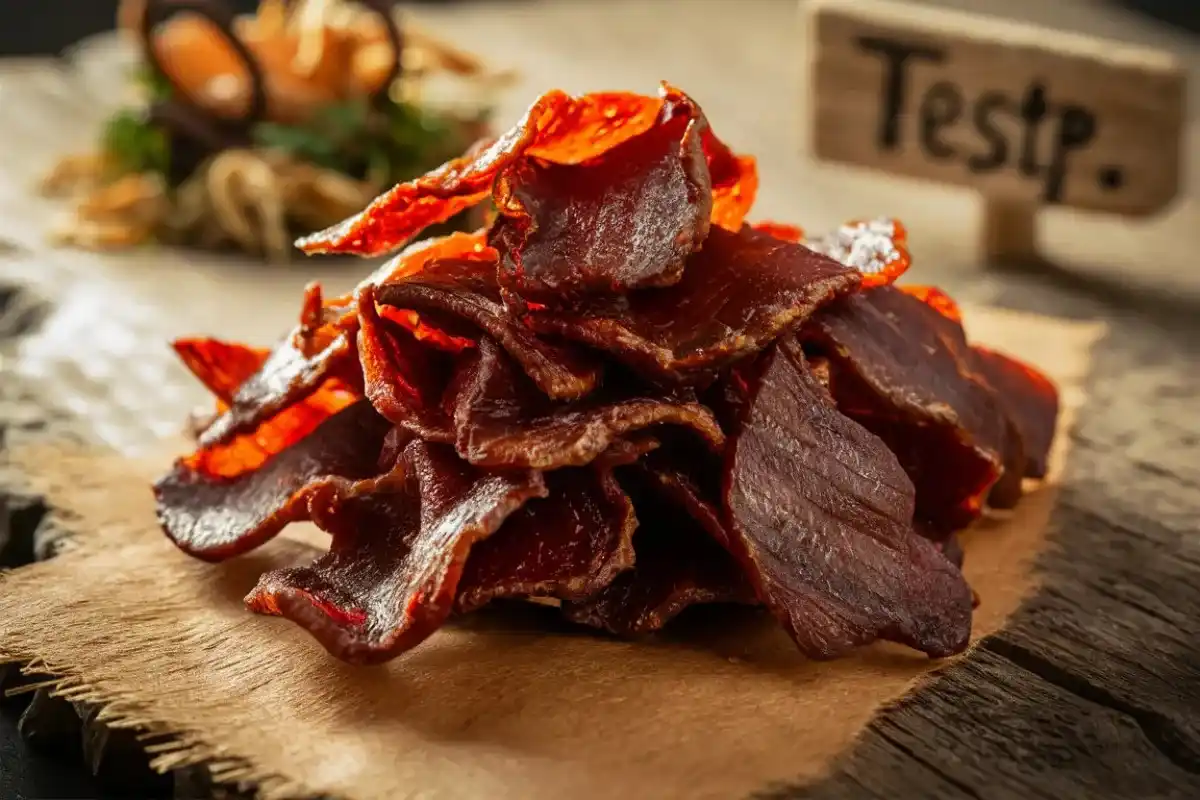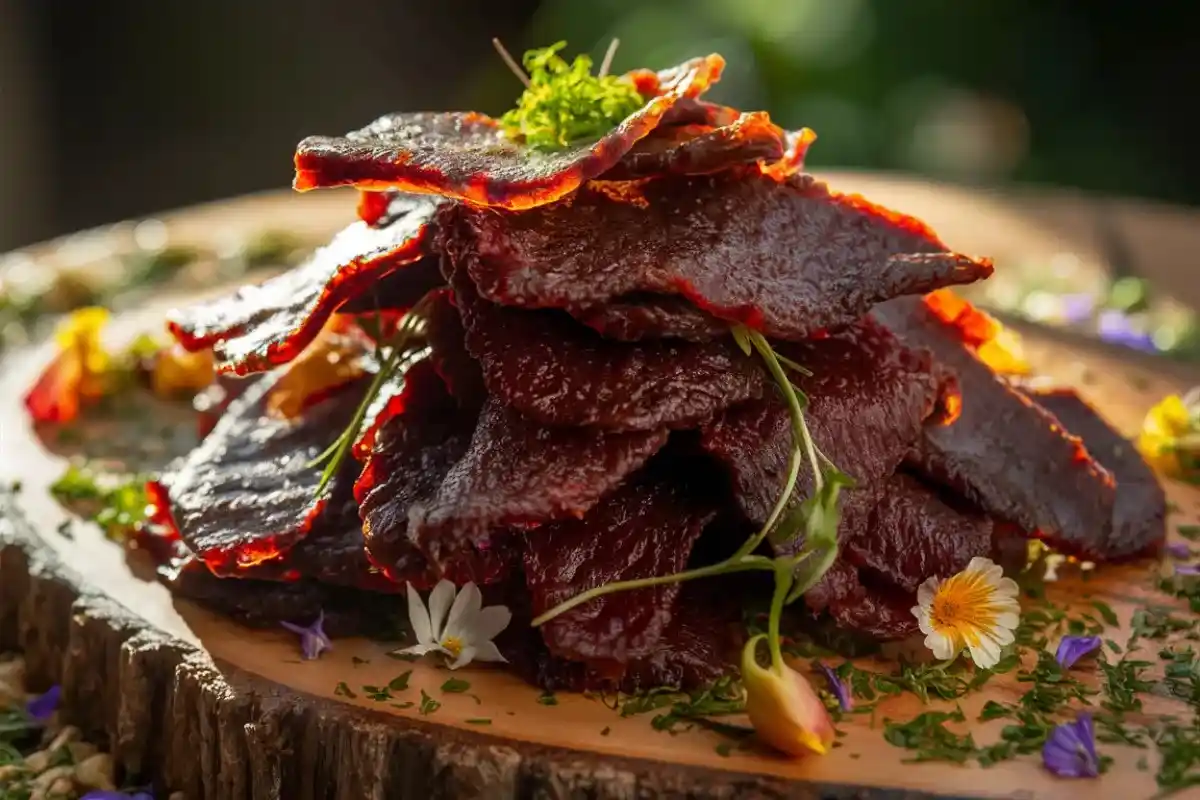Beef jerky, a popular and portable snack, is beloved for its rich flavor, convenience, and high protein content. However, questions often arise about the shelf life of beef jerky, particularly when it remains unopened. So, does unopened beef jerky go bad? This article explores the shelf life of unopened beef jerky, the factors that affect its longevity, and how to ensure that your jerky stays fresh and safe for as long as possible.
What is Beef Jerky?
Beef jerky is a form of dried, preserved meat made from lean cuts of beef that have been marinated, seasoned, and dehydrated. The dehydration process removes most of the moisture content, which helps to inhibit the growth of bacteria, molds, and yeast that typically cause food spoilage. Additionally, the use of salt and spices not only enhances the flavor but also contributes to its preservation.
Understanding the Beef Jerky Manufacturing Process
The process of making beef jerky begins with selecting high-quality, lean cuts of meat. The fat content is minimized as much as possible since fat can become rancid over time, even in dried meat. The meat is then marinated in a blend of seasonings, which usually includes salt, sugar, soy sauce, Worcestershire sauce, garlic, pepper, and other spices. The marination process imparts flavor and acts as a preservative.
Once marinated, the meat is placed in a dehydrator or smoker and dried at a low temperature for several hours. This drying process removes up to 90-95% of the moisture from the meat, creating a product that is lightweight, shelf-stable, and resistant to microbial growth.
Factors Affecting the Shelf Life of Unopened Beef Jerky

Several factors contribute to the shelf life of unopened beef jerky. Understanding these factors can help you determine how long your beef jerky will last and how best to store it to extend its shelf life.
1. Manufacturing Techniques and Ingredients
The method used to produce beef jerky plays a crucial role in determining its shelf life. For instance, commercial beef jerky is often produced in facilities where humidity and temperature are strictly controlled, ensuring that the dehydration process is efficient. Moreover, commercially made jerky may contain preservatives, such as sodium nitrite, which help to prolong its shelf life. Homemade jerky, on the other hand, may not have the same level of preservatives, resulting in a shorter shelf life.
2. Packaging Quality
The packaging used for beef jerky is also a critical factor in determining its shelf life. Most commercial beef jerky is packaged in vacuum-sealed bags or nitrogen-flushed pouches. These methods are designed to remove oxygen from the packaging, thereby reducing the risk of oxidation, which can lead to rancidity. Understanding Expiration Dates can also provide insights into how packaging and storage affect food longevity.
3. Storage Conditions
Storage conditions greatly affect how long unopened beef jerky remains fresh. To maximize its shelf life, beef jerky should be stored in a cool, dark, and dry place. Exposure to heat, light, or moisture can accelerate spoilage, leading to changes in flavor, texture, and appearance.
- Cool Temperatures: Heat can cause the fats in beef jerky to become rancid, and it can also promote bacterial growth. For best results, store beef jerky in a pantry or cupboard away from heat sources.
- Dark Storage: Light, particularly ultraviolet (UV) light, can degrade the quality of beef jerky over time. Store jerky in a dark place, such as a pantry or cupboard.
- Dry Conditions: Moisture is one of the biggest enemies of dried meat products like beef jerky. Store your jerky in a dry place to prevent mold growth and texture changes.
4. Moisture Content
The moisture content of the jerky itself is another factor to consider. If the jerky is too moist, it may not have been dehydrated properly, which could lead to a higher risk of bacterial growth and spoilage. On the other hand, jerky that has been dehydrated thoroughly will have a much lower risk of spoiling.
5. Use of Preservatives
Many commercial jerky manufacturers add preservatives like salt, sugar, and nitrates to their products. These ingredients help to inhibit the growth of bacteria, yeast, and molds, which can cause spoilage. Salt, in particular, is a powerful preservative that draws out moisture from the meat and creates an environment that is inhospitable to microbial growth. The use of preservatives can significantly extend the shelf life of beef jerky, especially when combined with proper storage techniques. For a deeper understanding of why meat goes rancid, check out this article on meat spoilage.
How Long Does Unopened Beef Jerky Last?

Generally, unopened beef jerky has a shelf life ranging from several months to a year or more. The exact duration depends on factors such as:
- Commercial vs. Homemade Jerky: Store-bought jerky often contains more preservatives, giving it a longer shelf life (usually up to 1 year or more) compared to homemade jerky, which might last around 6 months.
- “Best By” and Expiration Dates: While jerky may still be safe to consume past its “best by” date, its quality might decline. It’s essential to use your senses to check for any signs of spoilage.
For more insights on how long beef jerky lasts, you might find this article helpful, as it explains various factors affecting jerky’s shelf life and preservation methods.
Shelf Life Guidelines Based on Packaging
- Vacuum-Sealed Packaging: This is the most common packaging for commercial beef jerky. Vacuum-sealed packaging can keep jerky fresh for up to 12 months or more, depending on the storage conditions.
- Nitrogen-Flushed Packaging: Some manufacturers use nitrogen gas to replace the oxygen in the package, further preventing oxidation and extending shelf life.
- Oxygen Absorbers: Small packets placed inside jerky packaging absorb residual oxygen, adding an extra layer of protection against spoilage.
Comparing Store-Bought and Homemade Beef Jerky
- Store-Bought Jerky: Typically has a longer shelf life due to the use of preservatives, vacuum-sealing, and controlled manufacturing environments.
- Homemade Jerky: May not contain added preservatives and is often stored in less durable packaging, resulting in a shorter shelf life. Homemade jerky should ideally be consumed within 1-2 months for optimal quality.
Signs That Unopened Beef Jerky Has Gone Bad
Even though unopened beef jerky has a long shelf life, it can still go bad under certain circumstances. Here are some common signs that your unopened beef jerky may no longer be safe to eat:
- Smell: A sour, rancid, or off smell is a clear indication that the jerky is no longer fresh. Beef jerky should have a rich, meaty aroma; any unpleasant odor suggests spoilage.
- Texture: If the jerky feels excessively hard, sticky, or mushy, it might have been exposed to moisture and should be discarded.
- Color Changes: Any discoloration, such as dark spots or an unusually light or grayish color, suggests that the jerky has started to spoil.
- Presence of Mold: If you see white, green, or black spots on the jerky, it has likely developed mold and should be discarded immediately.
For more details on identifying spoiled jerky, you can refer to this guide which explains how to recognize signs of spoilage in beef jerky.
Proper Storage of Unopened Beef Jerky

To ensure your unopened beef jerky stays fresh for as long as possible, proper storage is essential. Here are some tips to help you store your jerky correctly:
Ideal Storage Conditions
- Store in a Cool, Dark Place: Exposure to heat, light, and humidity can cause the jerky to spoil faster. A pantry, kitchen cupboard, or drawer is an ideal storage location.
- Avoid Refrigeration or Freezing: While it might seem logical to store jerky in the refrigerator or freezer, this is not always necessary for unopened packages. Freezing can change the texture of the jerky, making it tougher and less enjoyable to eat.
- Check the Packaging Regularly: Inspect the packaging for any signs of damage, such as holes or tears, that could allow air or moisture to enter and compromise the quality of the jerky.
Storage After Opening
If you open a package of beef jerky but do not consume it all at once, follow these steps to keep it fresh:
- Use Airtight Containers: After opening, transfer the jerky to an airtight container or resealable bag to minimize exposure to air.
- Store in a Dry Place: Make sure to keep the jerky in a dry location to prevent moisture absorption.
- Consume Within a Few Days: To enjoy the best flavor and texture, consume the opened jerky within a few days.
For more detailed guidance on how to store beef jerky long-term, you can check out this resource which offers practical advice on ensuring your jerky stays fresh.
Does Beef Jerky Expire Even If Unopened?
Understanding Expiration and “Best By” Dates
The dates printed on beef jerky packaging, such as “best by,” “use by,” or “expiration” dates, are often a source of confusion. Here’s what you need to know:
- “Best By” Date: This date indicates when the manufacturer believes the product will be at its peak quality. It does not necessarily mean the jerky is unsafe to eat after this date.
- Expiration Date: This date is typically used for foods that have a higher risk of spoilage, such as dairy or fresh meats. For beef jerky, an expiration date is less common but may appear on some packages.
Factors Influencing the Shelf Life Beyond Expiry
- Packaging Integrity: Jerky that remains in its original, sealed packaging will often stay fresh longer than jerky that has been opened and exposed to air.
- Storage Conditions: As mentioned earlier, cool, dark, and dry conditions are ideal for storing jerky. Beef jerky stored in a hot, humid environment will spoil much faster.
Can You Eat Unopened Beef Jerky Past Its Expiration Date?
In many cases, unopened beef jerky is still safe to eat past its expiration date, provided that the packaging is intact and there are no signs of spoilage. However, the flavor and texture might not be as good as it was when fresh. If the jerky smells, looks, or feels off, it’s best to err on the side of caution and discard it.
Comparative Analysis: Beef Jerky vs. Other Dried Meats
While beef jerky is a well-known dried meat snack, it is not the only one available. Here’s a comparison between beef jerky and other popular dried meats:
Biltong
- Preparation Method: Biltong is a South African dried meat that is typically air-dried rather than dehydrated with heat.
- Flavor Profile: It tends to have a chewier texture and may include a mix of vinegar, salt, and spices for seasoning.
- Shelf Life: Due to its drying process, biltong can last several months when stored correctly.
Prosciutto
- Preparation Method: Prosciutto is an Italian dry-cured ham that is aged for several months to years.
- Flavor Profile: It is often served thinly sliced with a delicate, salty flavor.
- Shelf Life: Prosciutto can last up to a year if stored properly, but it must be refrigerated once sliced.
Dried Fish
- Preparation Method: Dried fish, such as stockfish or cod, is dehydrated through air drying or smoking.
- Flavor Profile: Dried fish can have a strong, salty flavor and a tough texture.
- Shelf Life: Dried fish can last for months to years depending on the species, drying process, and storage conditions.
Frequently Asked Questions
1. Can you eat unopened beef jerky past the expiration date?
Yes, as long as there are no signs of spoilage and it has been stored properly, unopened jerky is often safe to eat past its expiration date.
2. What happens if you eat expired beef jerky?
Consuming expired jerky might not be dangerous if there are no signs of spoilage, but the flavor and texture may be affected.
3. How do you know if beef jerky is safe to eat?
Check for any changes in smell, texture, or appearance. If any signs of spoilage are present, it’s best to discard it.
4. Why does beef jerky last so long?
The dehydration process removes moisture, and the addition of salt and preservatives inhibits bacterial growth, extending its shelf life.
Conclusion
While unopened beef jerky can last a long time, it is essential to store it properly to maintain its quality. Factors such as manufacturing techniques, packaging, storage conditions, moisture content, and the use of preservatives all influence how long jerky will last. Always check for signs of spoilage before consuming and use your best judgment when deciding if jerky past its “best by” date is still suitable to eat.
By understanding these factors and following the right storage practices, you can enjoy your beef jerky safely for months, even years.
For those who make jerky at home or buy in bulk, understanding the dynamics of storage and packaging can ensure the best taste and longevity for your favorite snack.

